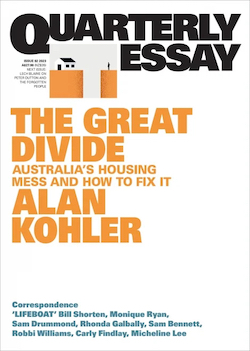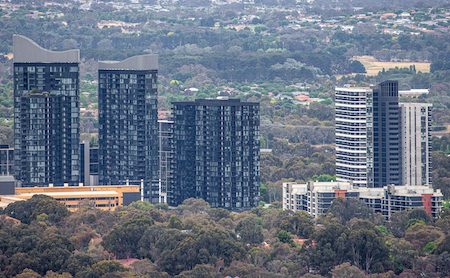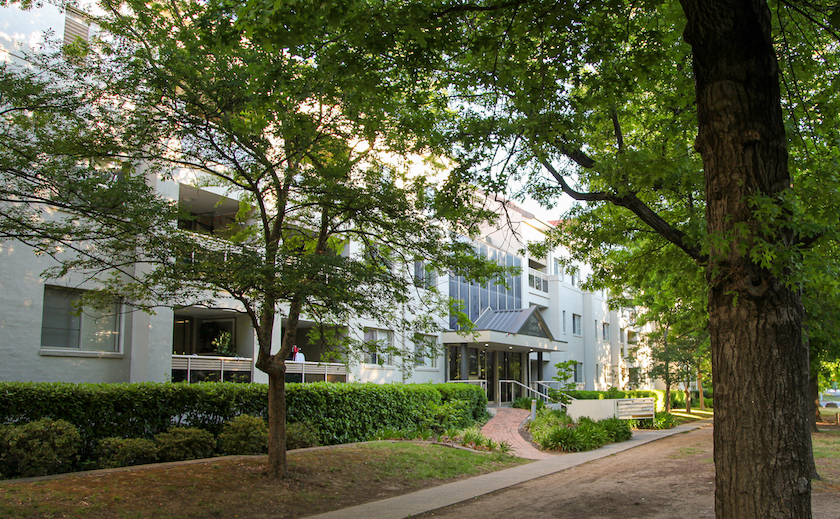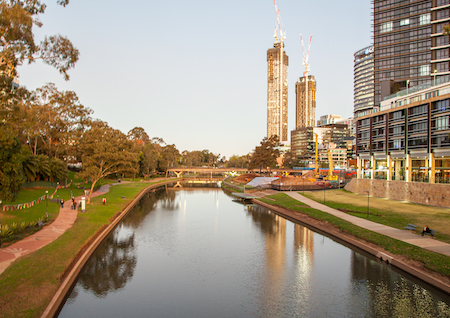Housing
Alan Kohler on housing – a cartelized industry
“Wotcha gunna do ‘bout ‘ousing?” asked a heckler at one of Menzies’ rallies.
“I’d put an ‘h’ in front of it” was his dismissive reply.

So it has been with housing policy – a lack of political commitment, resulting in no more than incremental policy adjustments to address affordability. Housing policy has usually been guided by political nostrums, and the hard reality that most Australians don’t consider housing affordability to be a problem at all, though they would not dare admit it publicly. Journalists report positively on rising house prices as a sign of prosperity, while in the same newspaper other journalists report on an affordability crisis.
Alan Kohler’s Quarterly Essay The Great divide: Australia’s housing mess and how to fix it, is a masterful work that describes and analyses a truly complex system, and deals with the absurdity he describes at the end of his work:
The fact that one of the three least populated countries on Earth contains the world’s second-most expensive housing is a national calamity, and a stunning failure of public policy. For decades, political leaders have paid lip service to housing affordability, while doing nothing about it that would bring prices down. In fact, most of the big, political decisions have done the opposite.
He describes in detail why the price of housing in relation to annual incomes took off at the turn of this century, rising from around 3.5 times income to 7.5 times income. He pulls together history, politics, social prejudices, geography, taxation policy, bureaucratic inertia, town planning, immigration, the YIMBY movement (no, it’s not a typo), federation issues, transport economics, the influence of arbitrary ideas such as governments’ 2-3 percent inflation target, and of course the basic economic laws of demand and supply.

YIMBY (Belconnen ACT)
His most challenging conclusion is that high housing prices are sustained by a huge cartel – a cartel of millions of home owners who have little or no mortgage liability, and who have an interest based on an irrational confusion of wealth and market values. As he writes at the outset “high-priced houses do not create wealth; they redistribute it”, but most people don’t understand that a rise in house prices is simply inflation. The other members of this cartel are bankers, who do well out of high house prices.
He describes changes in the way we perceive housing: how it has shifted from shelter as a basic human need to become a financialized commodity, and how public housing has shifted from an economic investment to put a floor on prices to an instrument of distributive welfare for the poor. Both perceptions result in poor public policy.
There are solutions, dealing with both supply and demand, but they all require political courage, and a clear articulation of what a desirable outcome looks like. His suggestion of a policy target is a return to a 3.5 price-to-income multiple.
The Australia Institute has a one-hour video discussion between Alan Kohler and Ebony Bennett, and he is the guest on a 20 minute session on last week’s Saturday Extra, but these media don’t include his graphs (where would Kohler be without graphs?), and they don’t do justice to the content that can be covered only in written media.
Lucy and Malcolm on urbanism

Medium density apartments Braddon ACT – a model that’s fallen out of fashion in most cities
During the short time of the Whitlam government the Coalition mounted a spiteful denigration of the Department of Urban and Regional Development (DURD) headed by Tom Uren. DURD’s mission was about improving life in our sprawling cities, and promoting decentralization. To the Coalition the spatial development of our cities was best left to property developers and in other regions it could be promoted by National Party taxpayer-funded boondoggles, but otherwise the Commonwealth should stay right out of regional policy.
So it was a surprise to hear Lucy and Malcolm Turnbull resurrect the spirit of DURD in the 2023 Griffin Lectureat the Press Club. They presented the lecture as a her and his contribution. Lucy, drawing on her background as Lord Mayor of Sydney, spoke about urban issues, while Malcolm spoke about the broader issue of Commonwealth involvement in spatial planning.
Overshadowing their presentation was the severe shortage of housing. They both spoke about the curious Australian phenomenon of small clusters of 50 storey or higher apartment blocks, surrounded by vast expanses of single-storey houses, with not a lot in between. Even those who can afford housing are left with a choice between small apartments near urban centres, which are usually units built for housing speculators (euphemistically called “investors”) and single-storey houses in the distant suburbs.
The main (but not only) problem is that too much authority has been left in the hands of local government, who have little political choice but to yield to NIMBY pressures. As a current example NIMBY politics is slowing down the development of densification around stations on Sydney’s soon-to-be completed Metro line to Bankstown.

Parramatta’s growing city centre, 25 km from Sydney CBD)
Malcolm Turnbull reminded us that his government recognized that our big cities, Sydney in particular, have regions within them – a recognition prompted by the opportunities around the development of the Nancy-Bird Walton Airport at Badgerys Creek. Too long have our big cities been considered as homogenous blobs surrounding a CBD, a settlement pattern that makes for huge inefficiencies in transport.
To anyone steeped in the ideology of the Liberal Party their presentations would have been heretical. There was even a “build-it-and-they-will-come” in their policy prescription, a model that brings together all government agencies – Commonwealth state and local – to work together to deal with practical problems and opportunities in urban planning, in both greenfield and redevelopment situations. For example it makes sense to develop mass transit at the same time as developing local roads and housing blocks, but this does not happen unless there is policy coordination.
A discussion on policy coordination raises the question of whether the Commonwealth should be involved in issues that some see as the proper domain of the states. That question goes to the nature of our federation, and the specific powers listed in Section 51 of the Constitution. The Liberal Party in times past tended to take what it called a “federalist” stance, and was opposed to initiatives such as DURD.
Commonwealth involvement in spatial policy also brings in issues about government accounting and public service expertise. The long-established practice has been for the Commonwealth to hand money to the states for specific projects, and to have no further involvement. On the Commonwealth’s books such a transaction appears as a recurrent outlay, because the asset appears on the state’s balance sheet.
The main problem with that model is that it keeps attention focussed on the Commonwealth’s fiscal cash balance, rather than the public sector balance sheet. The Commonwealth should be able to invest in assets without partisan journalists and irresponsible opposition politicians accusing it of profligacy, but established accounting practices make it easy for the cash balance – the budget deficit or surplus – to dominate election campaigns.
Successive Liberal Party treasurers have made political capital of the cash balance, rather than engaging in a grown-up conversation about recurrent and capital outlays, and debt and assets. Such simplified and misleading presentation of fiscal management is surely one reason our stock of public assets, including public housing, is so badly depleted. The Housing Australia Future Fund breaks from that model, but as the Turnbulls pointed out, it’s a small contribution to our housing needs.
The other problem is a lack of public service expertise. As demonstrated in the Rudd government’s Home Insulation Program, the Commonwealth is severely lacking in technical expertise: most of the Commonwealth’s engineers and project managers went with privatization, leaving it with many well-qualified lawyers and economists.
Most of the Turnbulls’ 70-minute session is given to Q&A, involving considered responses to journalists’ questions. We have four living former Liberal Party prime ministers: it’s refreshing to find that one of them, rather than behaving like an embittered old man preaching economic drivel, is prepared to contribute to public ideas and our understanding of public policy.